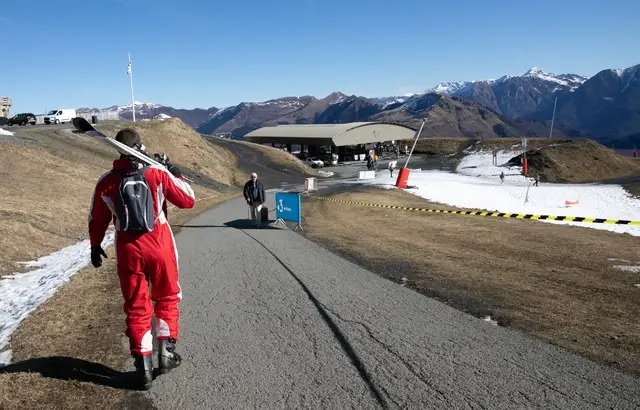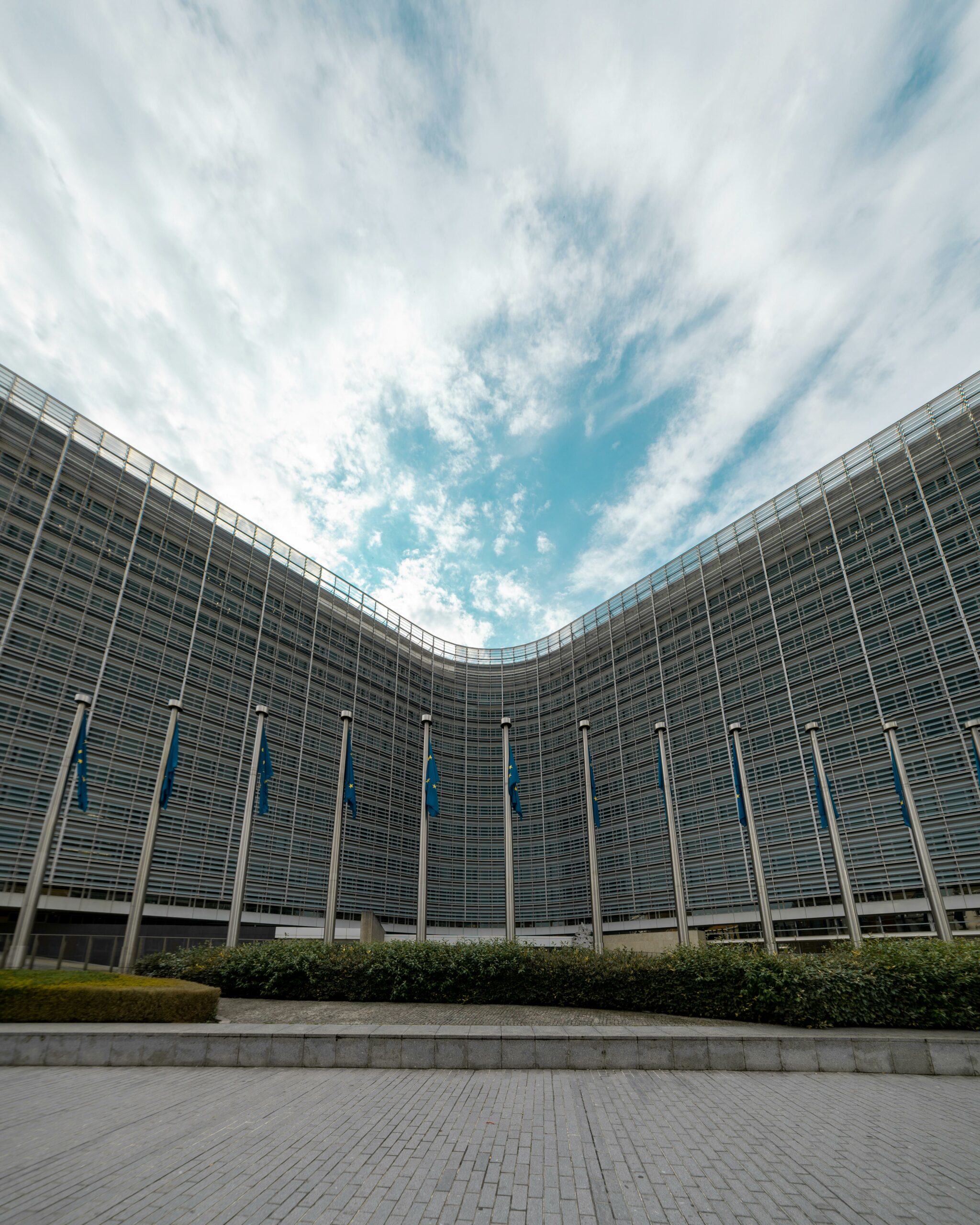The lucrative tourism sector offers a concrete terrain to explore the issues raised by the issue of just transition. The Pyrenees have been known under 7 meters of snow. Without enough snow to sustain skiing activities, officials decided to import it by helicopter this winter. A concrete case putting companies, authorities and investors in front of their responsibilities for a just transition.
Planning and Forecasting Longer-Term Activities
1. The Ease of Making Short-Term Economic Decisions in a Situation of Urgency
A small resort in the Pyrenees finds itself in the middle of the school holidays, the high point of winter tourist activity in the region, without snow. Despite the shock, the local officials, in charge of the management of ski resort of Luchon-Superbagnères, decide to heliport snow. A short term choice which is totally justified considering the elements in the hands of economic decision-makers who do not plan their activity beyond March:
- Helicopter transporting the snow necessary for the minimum operation of the resort and in particular its ski lessons costs only 5,000 to 6,000 euros. Obviously, this price does not reflect at all the carbon cost of the operation.
- The decision-makers justify the decision by a return on investment about 10 times higher, allowing in particular to maintain directly about fifty jobs and the indirect tourist benefits on the territory, in particular through hotels and the restoration industry.
It’s easy to criticize the operation. But its economic rationale is based on sensible reasoning: giving priority to employment (and social peace) in the short term, rather than taking into account longer-term perspectives.
2. The Importance of Taking Longer-Term Economic Decisions.
This case study is interesting to explore from different angles, particular issues related to climate policies and just transitions that will take place in the coming years:
- Acceptability of practices. Sending helicopters to save lives in the mountains is a reasonable practice. Even to help unconscious people who risk the lives of their own rescuers. The ecological cost is secondary. On the other hand, the climatic issue is becoming so important that the snow heliport is no longer acceptable.
- Attractiveness of activities, even employability. Various studies already show how 18-35 year olds are less and less attracted to the mountains. With growing climate awareness, the snow heliport is unlikely to change this trend in the coming years. For the territory, it is a decline to be anticipated because these 18-35 year olds are the families of tomorrow who will prefer to spend their holidays elsewhere – with or without snow…
- The future for economic activities, jobs and territory in a changing world. Authorities, companies and investors have every interest in projecting themselves in a logic of just transition to project economic activities, jobs and the valuation of investments (real estate for example) in what will continue to create wealth, jobs and value on the territory in the coming years. This work of the OECD is contributing to these objectives.
Thus, as we can see, the example of the ski resort is instructive in encouraging authorities, businesses and investors to make the link between climate and just transition.
Climate and Just Transition: Economic Common Sense
1. How the Just Transition Offers a Constructive Way to Address Climate Issues
“Reflecting on a just transition allows us to move from a logic of collective dilution of climate responsibilities to a dynamic of joint responsibility of local and regional stakeholders”.
The climate issue is generally complex to deal with. In essence, it goes beyond everyone. The intrinsic dilution of responsibilities makes it easier to pass the buck to other stakeholders so as not to do much ourselves.
Just transition can be defined as the way in which we can collectively make shifts adapted to the new contextual climate situation in the most inclusive way possible. Why an inclusive reflection is needed, by the way?
- First of all, because the climate issue requires a collective effort. A collective effort requires inclusion. An individual effort that does not succeed in being part of a collective logic is helpful but not sufficient when it comes to the climate issue.
- Secondly, because the climate shock is such – just look at the discrepancies observed between a 1.5 or 2 degree IPCC trajectory – that without an inclusive approach, the climate transition is part of major conflicting dynamics, which are counterproductive. Multiple recent social movements such as the Yellow Vests in France have shown both: collective resistance to a carbon tax deemed unfair in its application, generating an environment of sustainable conflict and wiping the slate clean of the carbon tax… and putting a price on carbon contributes precisely to supporting the climate transition….
Thus, thanks to the reflection on just transition, we are moving from a logic of collective dilution of climate responsibilities to a dynamic of joint responsibility of local stakeholders. This is much more constructive. In this way:
- To date, government and authorities have shown themselves incapable of making a serious commitment to a climate approach that is adequate to the stakes. These same authorities are committed in different ways to the issue of jobs and the development of local employability. A question about social peace, taxes and an electoral system designed to build a concrete future for voters and inhabitants of the territories
- Companies do not generally see the cost of carbon, nor the cost of environmental externalities generated by their activities, with a few exceptions of leaders or niche regulated markets. The question of territorial economic viability is quite different. The company needs to find employees, subcontractors, consumers, infrastructures. This is part of a resilient territorial dynamic capable of adapting and developing economic activities to climate change.
- Investors make forecasts for the valuation of their assets – for example real estate, but also for economic assets in goods and services. If the climate issue is profoundly transforming the valuation of assets and the quality of the portfolio, it is obviously a fact to be taken into account. It is clear that human and economic activity does have an impact on the valuation of many assets. In the case of real estate, for example, a location produces a supply and demand effect that may or may not assess the value of the asset. If the territory declines, if employment disappears due to climatic effects, the assets are written down. If, on the other hand, a territorial dynamic of just transition operates, the assets are more resilient to adapt to a different human and economic reality.
2. Just Transition: A Constructive Stakeholder Dynamic
Thus, authorities, businesses and investors can find around the notion of just transition a constructive ground to advance their own interests as much as the climate issue.
- For the authorities in charge of territorial planning, not only are the IPCC’s macroeconomic forecasts being significantly refined to provide the main guidelines, but there are also numerous studies and data, both free and fee-based, available to explore the hundreds of typologies of climate impacts identified – whose models are being refined and are still largely perfectible. However, this is more than enough to project the territory to 2030, or even 2050, and anticipate the economic transitions that are essential to adapt and remodel human activity.
- For companies, the climate issue must become central. It is not only a matter of placing businesses on a trajectory compatible with a 1.5 degree scenario of the Paris Agreement (which assumes a rapid and drastic reduction in carbon dependency and its derivatives), but also of anticipating territorial changes in order to diversify, or even transform. The competitiveness or even survival of the business is at stake, as much as the attractiveness of the employer image.
- For investors, these issues of just transition allow a better understanding of the systemic risks carried by assets, better consideration of clients’ interests in asset management, while contributing more actively to the societal and economic issues of our societies.
Conclusion: Let’s Think About Just Transition to Create More Resilient and Inclusive Economic Activities
So, good news. If the climate issue has not been taken into account to the extent required by the stakes to date, the question of just transition offers a more favourable breeding ground for this. There are many solutions to this effect.
Thus, a relevant response from ski resorts and their stakeholders in charge of the territory and economic activities is to identify the path of adaptation and transformation allowing to plan the activity and employment in the next decade, under climatic constraint. Hundreds of billions have been injected to create economic activity on snow and slopes. There is an urgent need to redirect the injection of investment to create more resilient and inclusive activities.
Président et Cofondateur. Auteur de différents ouvrages sur les questions de RSE et développement durable. Expert international reconnu, Farid Baddache travaille à l’intégration des questions de droits de l’Homme et de climat comme leviers de résilience et de compétitivité des entreprises. Restez connectés avec Farid Baddache sur Twitter @Fbaddache.












